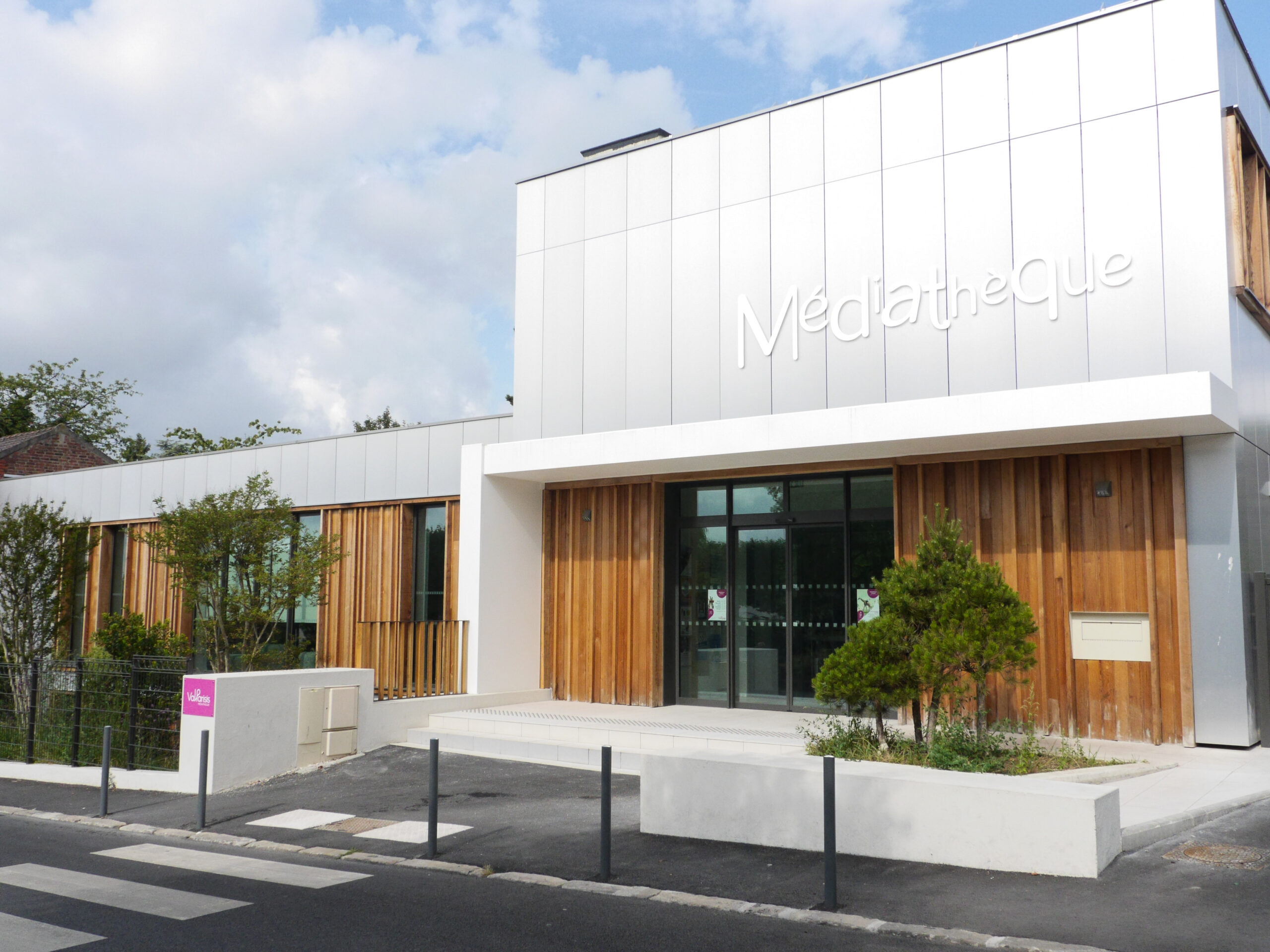RFID in Libraries: investment considerations
As a free community institution dedicated to lifelong learning, the library is considered a safe place for everyone, regardless of social, cultural, and economic backgrounds. Libraries are tasked with creating more relevant programs, partnerships, outreach, innovation, and community connections every day. Visitors enjoy inspiring spaces, helpful staff, robust resource collections, makers spaces, free Wi-Fi, and public access computers. As an essential learning hub that allows community members to extend their knowledge through carefully crafted programs, spaces, and human connections, libraries must find ways to ensure their staff time is focused on the areas with the most significant impact.
In order to deliver positive experiences for both library members and staff, libraries have looked for methods and technologies to automate their workflows and processes. The leading technology, Radio Frequency Identification (RFID), is a technology many libraries around the world implement to increase staff efficiency and provide users with a convenient self-service experience. To decide if the outcomes justify making an investment in RFID technology, library management should consider the benefits to the library, the staff, and library users, the near-term costs, and the arguments for introducing new technology.
Reasons to Adopt
Libraries of all sizes and types have implemented RFID technology since it was first adopted in 1998. RFID helps libraries improve customer satisfaction, create staff workflow efficiencies, and become more fiscally responsible. Common reasons libraries give for making the investment in RFID in libraries include:
1. Customer satisfaction. Books and other materials move in and out of the library faster with RFID technology. For instance, library users can check out multiple items simultaneously at a self-checkout unit equipped with RFID. As a result, they spend less time waiting for others to complete their self-service transaction or for library staff at a circulation desk to finish with the customer ahead of them. RFID technology combined with automated materials handling systems has been proven to speed the process of getting high-demand items back on the shelves quickly. Additionally, those items are more likely to be shelved accurately, which increases convenience and reduces frustration.
2. Staff productivity and satisfaction. With RFID, librarians can do more in less time. Some of the most time-consuming tasks – check-ins, checkouts, searching for holds or lost items, and shelf management – can be fully or partially automated with RFID. That opens opportunities for improving current services and furthering the mission of the library. At many libraries, the installation of an RFID system has allowed librarians to create a more diverse set of programs and partnerships to address the evolving needs of their particular community.
This boost in productivity isn’t always an additional benefit; often, it’s a chance to return to the level of service library visitors enjoyed before circulation increased and budgets were cut. For other libraries, RFID is a proactive step, an investment today that will ensure adequate service if staffing levels don’t keep pace with constant increases in circulation.
For many people, the increased interaction with the library staff is the greatest benefit of RFID. When librarians spend less time on routine physical tasks, they can pay more attention to human connections and the customer experience.
3. Staff health. Many library professionals believe that circulation activities increase the occurrence of repetitive stress injuries. These activities include the mass handling of books, desensitizing and resensitizing materials, and opening media cases to check contents. RFID systems do not fully eliminate these activities, but they drastically reduce the need for item handling by librarians. Some libraries have turned to RFID systems as a strategy for reducing manual materials handling that can lead to repetitive stress problems.
4. Fiscal responsibility. For many library boards, the strongest argument for investing in RFID is that the technology typically pays for itself in two or three years. At a time of rising circulations, RFID systems can help keep staff costs constant and predictable. Material costs due to lost or misplaced items can be reduced. In fact, many libraries find thousands of dollars worth of “lost” items when they first implement an RFID shelf management program. RFID security systems reduce materials loss – a huge ongoing expense for libraries – and ensure items are correctly checked out. After the investment has been recouped, RFID systems continue to generate benefits for 10 years or longer.
Reasons to Wait
Many library systems acknowledge the benefits of RFID in libraries but haven’t decided to implement the technology yet. A few commonly cited reasons are detailed below:
1. Privacy concerns. For some, privacy issues are seen as the primary concern. People want assurances that no one will be able to track their personal library activity through RFID. We understand the value libraries place on their user’s privacy, and RFID adoption in libraries has been implemented with a full commitment to the industry’s promise to patron privacy. We believe that educating libraries on the technical capabilities of RFID will clarify much of the concern over what can and cannot be known using this technology.
RFID tags used in libraries do not contain user information. They only contain item barcode IDs and library-related information to each tag, meaning user privacy cannot be compromised. Furthermore, the high-frequency RFID tags used in library items cannot be read at more than 18 to 24 inches from a reader antenna. With larger, specialized high-power antennas, such as those found in our RFID gate premium, tags can be read within a 3 to 5-foot range. It’s highly impractical for covert surveillance to be able to read beyond 6 feet.
In addition, the RFID tags applied to library materials are passive and not powered – they do not emit a signal. A reader tuned to the RFID tag’s frequency, such as a self-checkout unit, must be present for the tag to emit a signal.
2. Expense. Some library boards like the idea of installing an RFID system, but they want to wait for another year (or two) before making the investment. The reality is that libraries need to work within limited budgets, and they have many areas of investment to consider. From operating funds to maintain or expand library programs, staffing, services, and collections to capital-building funds to update, renovate, or build new library facilities, libraries must think strategically about how they spend their money. Some libraries choose to wait on their RFID implementation.
Because RFID systems generate significant savings in library operating expenses and pay for themselves in just a few years, an investment in RFID can be justified any time a library can acquire the funding.
An investment in RFID quickly generates savings, which can then be applied to additional areas of investment need. During an RFID conversion, most libraries find many items that were thought to be lost or stolen, reducing their need to replace those items. Utilizing RFID technology also improves community perception, showcasing the library as a modern, innovative, and high-tech establishment that is investing in the improvement of the overall user experience and focusing their staff on personal interactions.
3. Disruption. Occasionally, a librarian will acknowledge that an RFID system would be a great improvement with obvious benefits for both staff and users but thinks the conversion process would be too disruptive when considering other library changes that are already in progress.
Conversion to RFID can be swift and painless. With the more efficient systems, most people won’t even know the conversion is taking place because only one book or item is removed from the shelf at a time. In these systems, a cart is positioned in the aisle between shelves. Staff, or volunteers, work item by item, converting from barcodes to RFID. The process is surprisingly fast; with a bit of practice, up to 450 items can be converted per hour. Meanwhile, library visitors can still access the shelves, and they experience virtually no inconvenience.
You may also like
Insights + Trends

Park Ridge Public Library: Improving the Patron Experience with RFID Technology
RFID technology has positively impacted Park Ridge Public Library—from streamlining checkout processes to adding new programs.

Val Parisis Media Library: A Metamorphosis with open+
Explore how Bibliotheca’s open+ technology is transforming library services in the Val Parisis area in France by extending operational hours and enhancing accessibility without additional staff.

Scott County Library: Transforming access with open+
Boosting Access: Scott County Libraries Extend Hours and Services for Community

